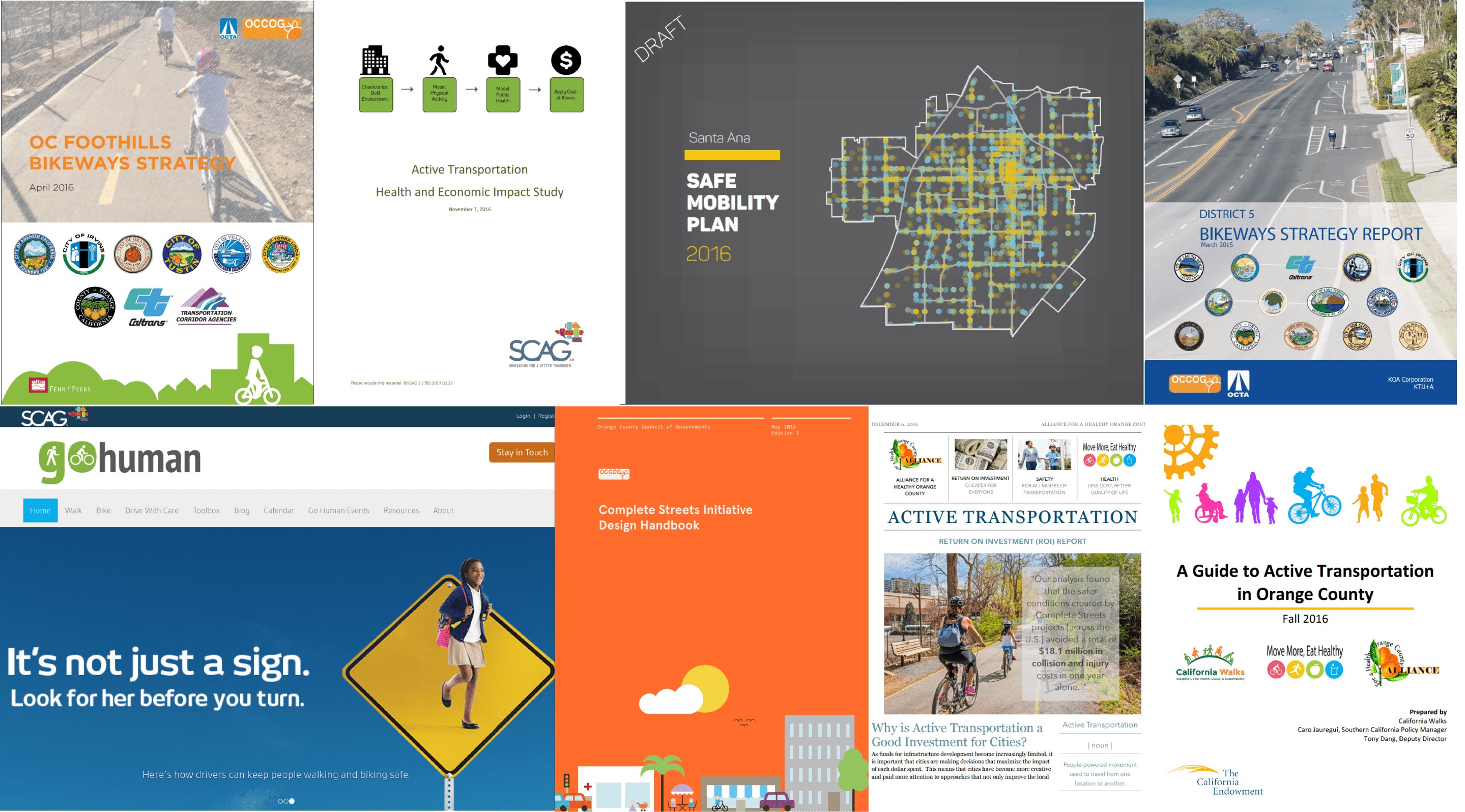There's a truism among advocates for making streets safer for all users: Before an area can walk the walk, they will spend a couple of years talking the talk. That means that before cities and counties and communities begin building the bicycle and pedestrian infrastructure to calm traffic and make streets safe, there will be years of planning and a lot of outreach for great progressive transportation plans.... that for the most part will sit on the shelves where they are placed.
Orange County is no different. In just the past several years, there have been many programs to promote safe and environmentally friendly transportation options in the county, including: Go Human, the Alliance for a Healthy Orange County Active Transportation Guide, Bikeways strategies in each supervisorial district, the Southern California Association of Governments Active Transportation Health and Economic Impact Study, AHOC Capital Improvement Plan Strategies, Guide to Active Transportation in Orange County, Active Transportation Return on Investment Report, Safe Mobility Santa Ana Plan, and the OCTA Bikeways Guide.
So now: how do advocates get these plans off the shelf and on the street? Oftentimes, government investment in projects can happen quickly after a singular event, such as the hiring of Janette Sadik-Khan in New York, or when L.A. Mayor Antonio Villaraigosa was forced off his bicycle by a negligent driver. But the Alliance for a Healthy Orange County (AHOC), a countywide health policy and funding collaborative, is trying something different: AHOC wants to make sure that decision makers, be they elected leaders or senior planning and transportation staff, know that these plans exist.
"Too many elected leaders—too many senior level people in planning and engineering—had never heard of these plans," wrote Rebecca Cousins, a policy analyst with AHOC.
As part of its ongoing Go Human campaign, AHOC and the Safe Routes to Schools National Partnership is bringing information to these leaders. They created a presentation outlining which progressive plans exist and how to use these plans to get more money to retrofit streets to make them better places for people to walk, ride a bicycle and, yes, drive a car. Their first stop was the Public Works Engineers Association for Orange County.
But as comprehensive as the presentation is—it has been uploaded to scribd here—they found there is one missing piece. Many of the engineers were more interested in success stories than in just knowing what plans exist. They needed examples to be convinced to invest in these types of projects. Unfortunately, there aren't many completed road diets, protected bike lanes, or complete-street makeovers in Orange County.
“The presentation would have been more powerful and more useful for the engineers if we had provided examples of how they could be or had been used. Unfortunately, since many people were unfamiliar with many of the plans, examples of them in action are in short supply," Cousins continued.
This highlights both how much work there is still to do, and how important this outreach is. Nevertheless early results from the outreach is good, especially because the effort isn't just to educate staff, but also encourage elected leaders to think beyond the car when it comes to transportation.
"Their approach is fine, using both routes," explained Rudy Emami, a public works engineer with the City of Anaheim and president of the Public Works Engineers of Orange County. "They've been speaking with elected officials and holding special forums for elected officials, stakeholders, and community members as well as reaching out to professionals."
And we've seen how that outreach can have an impact. Last year, #DamienTalks, a podcast on Streetsblog California, spoke with Steve Jones, now the Mayor of Garden Grove. In the podcast, Jones spoke about not being someone with a bicycling background who was moved to become a champion for active transportation projects in large part because of outreach done by AHOC as part of Go Human.
But while Garden Grove, as well as neighboring cities of Santa Ana and Anaheim, are making some progress, there are still 31 other cities in the county. AHOC and SRTS have their work cut out for them. The good news is that they are already underway.
(*Note - Rebecca Cousins is no longer with the Alliance for a Healthy Orange County, but gave this interview during her last week there.)






